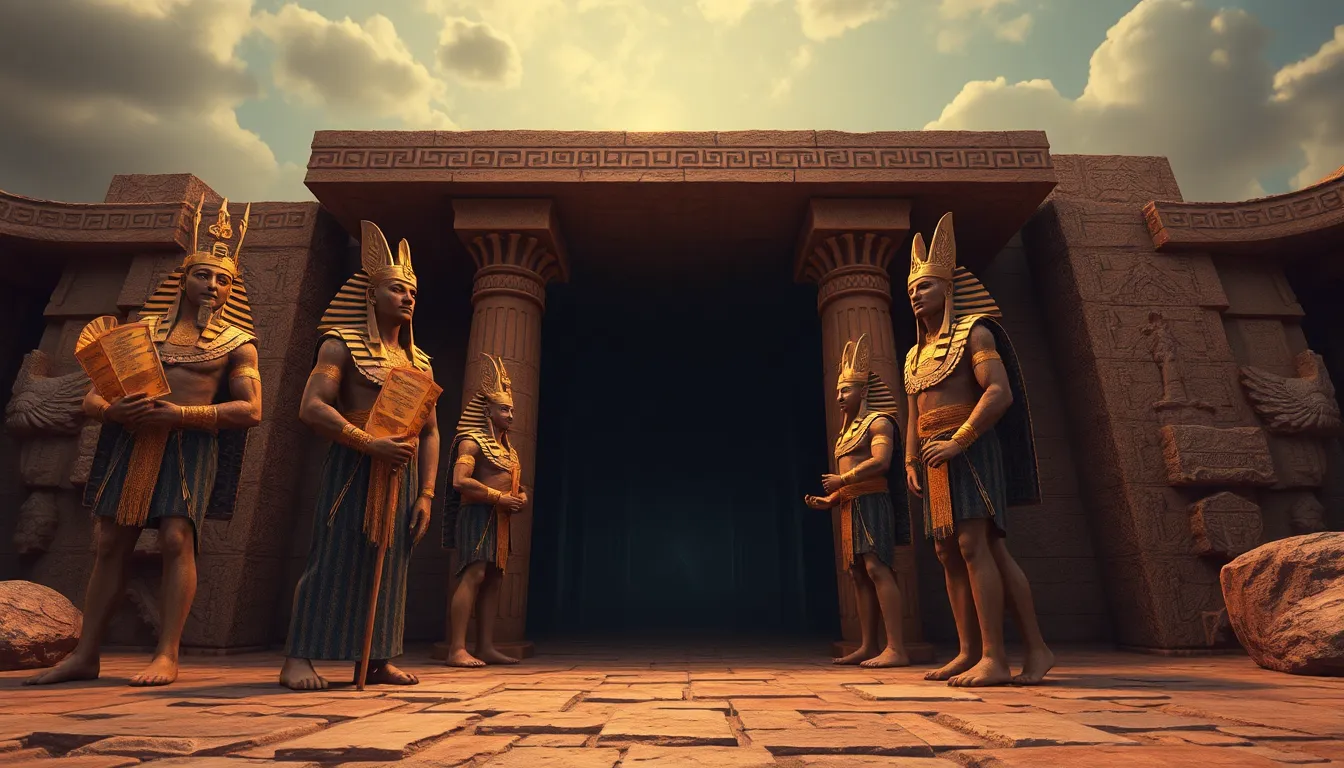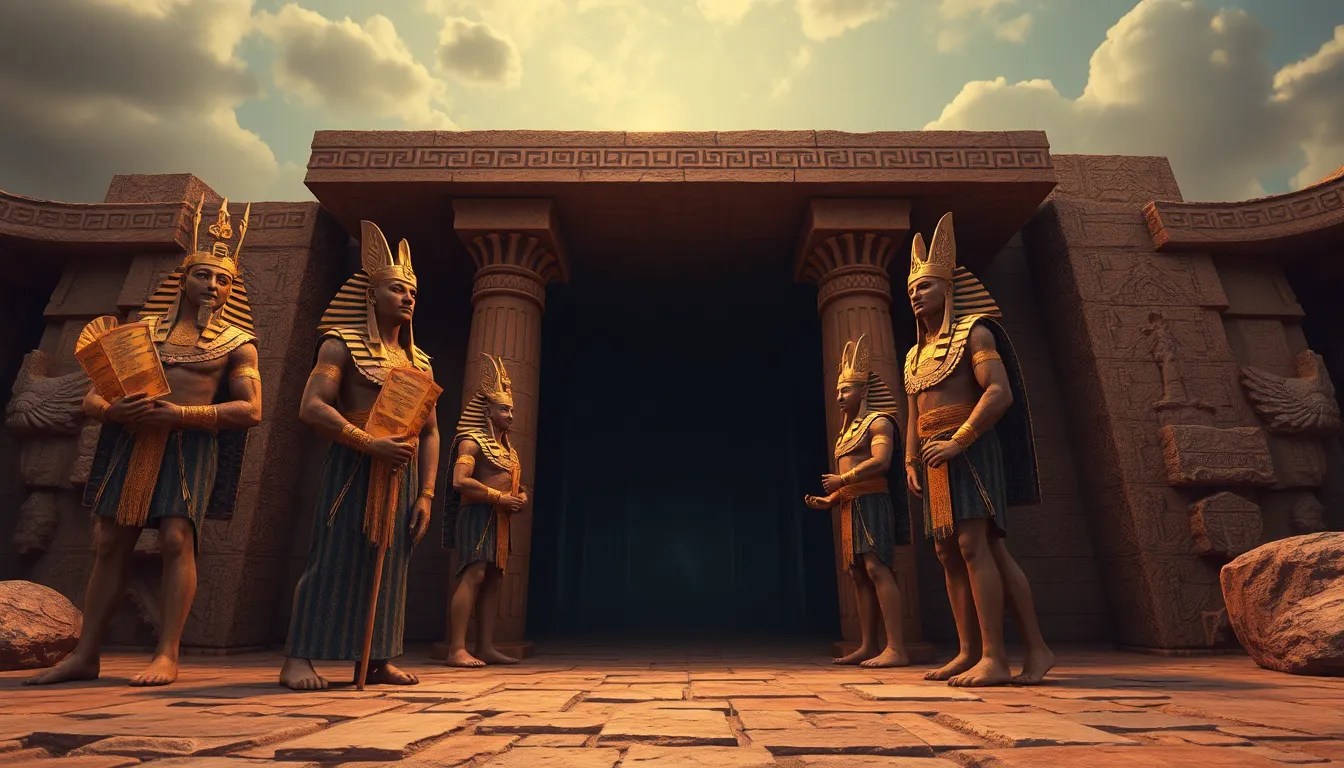The Guardians of the Underworld: How Deities Ensured Safe Passage
I. Introduction
The concept of the Underworld is a common theme across various cultures, often representing a realm where souls journey after death. In many mythologies, the Underworld is not merely a place of darkness but a complex domain governed by deities who ensure the safe passage of souls. These deities play crucial roles as guardians and guides, facilitating the transition from the living world to the afterlife.
The significance of ensuring safe passage is deeply rooted in the belief systems of ancient civilizations. It reflects humanity’s quest for understanding what lies beyond death and the hope for a favorable afterlife.
II. The Underworld in Mythology
The Underworld varies widely in definition and description across different cultures. In Greek mythology, it is often depicted as a gloomy realm ruled by Hades, while in Egyptian mythology, it is a complex landscape overseen by Osiris. The Norse underworld, Hel, presents another unique interpretation, where the dead dwell based on their lives’ deeds.
Comparative Analysis of Underworld Depictions:
- Greek Mythology: The Underworld is a shadowy place with various regions, including Elysium for the virtuous and Tartarus for the damned.
- Egyptian Mythology: The Duat is depicted as a journey with trials, ruled by Osiris, where the dead are judged.
- Norse Mythology: Hel is a cold, dark place where those who did not die gloriously in battle reside.
The symbolism of death and the afterlife often reflects societal views on morality, legacy, and the human experience, providing a framework for understanding existence beyond death.
III. Key Deities of the Underworld
A. Greek Mythology: Hades and Persephone
In Greek mythology, Hades is the god who rules the Underworld, ensuring that the dead are kept in their rightful place. He is often portrayed as stern and unyielding but not necessarily evil. His wife, Persephone, plays a crucial role as well. After being abducted by Hades, she becomes a guide for souls, assisting them in their journey through the Underworld.
B. Egyptian Mythology: Osiris and Anubis
Egyptian mythology presents a rich tapestry of beliefs regarding the afterlife. Osiris is the god of the afterlife, representing resurrection and eternal life. He oversees the judgment of souls, ensuring that they are weighed against the feather of Ma’at, symbolizing truth and justice. Anubis, the jackal-headed god, serves as the protector of graves and the guide for souls, leading them through the perilous journey to the afterlife.
C. Other Notable Deities
- Hel: In Norse mythology, Hel rules over the realm of the same name, where those who did not die a heroic death reside.
- Yama: In Hinduism, Yama is the god of death who guides souls to their next existence and oversees the cycle of rebirth.
IV. Rituals and Practices for Safe Passage
Ancient cultures engaged in various rituals to honor Underworld deities, believing that these practices would ensure safe passage for the deceased. Offerings and sacrifices were common, aimed at securing the favor of the gods and providing for the needs of the souls in the afterlife.
Funeral Rites: These rites varied significantly among cultures but often included:
- Burial practices, such as mummification in Egypt.
- Funeral games and feasts in Greek traditions.
- Ritual offerings of food and items in Norse burials.
These practices highlight the belief in an ongoing relationship between the living and the dead, emphasizing the importance of honoring those who have passed on.
V. The Journey of the Soul
The transition from life to the Underworld is often depicted as a perilous journey. Souls face various trials and tribulations, such as crossing the River Styx in Greek mythology or undergoing the weighing of the heart in Egyptian beliefs.
Challenges Faced by Souls:
- The River Styx: A barrier that must be crossed, often requiring payment to Charon, the ferryman.
- Weighing of the Heart: In Egyptian tradition, the heart is weighed against a feather, determining the soul’s fate.
Deities play a vital role in navigating these challenges, offering guidance and protection to ensure that souls reach their intended destinations.
VI. Cultural Interpretations of Safe Passage
Beliefs about the afterlife and safe passage vary significantly across cultures. Folklore and stories abound, illustrating the guardianship of deities and the importance of honoring them.
Impact on Societal Views:
- Death is often viewed not as an end, but as a transition to another state of being.
- Mourning practices are shaped by these beliefs, influencing how communities honor their dead.
VII. Modern Perspectives on Underworld Deities
Ancient beliefs about the Underworld continue to influence contemporary spiritual practices and cultural narratives. The revival of interest in mythological studies reflects a broader fascination with these ancient stories and their relevance today.
Literature and art play a crucial role in keeping these mythologies alive, inspiring new interpretations and adaptations that resonate with modern audiences.
VIII. Conclusion
Deities have long served as guardians of the Underworld, ensuring safe passage for souls embarking on their final journeys. The enduring legacy of these mythologies reminds us of the universal human concerns regarding death, the afterlife, and the quest for understanding what lies beyond.
As we reflect on these ancient beliefs, we recognize their significance in shaping our views on mortality and the eternal connection between life and death.




